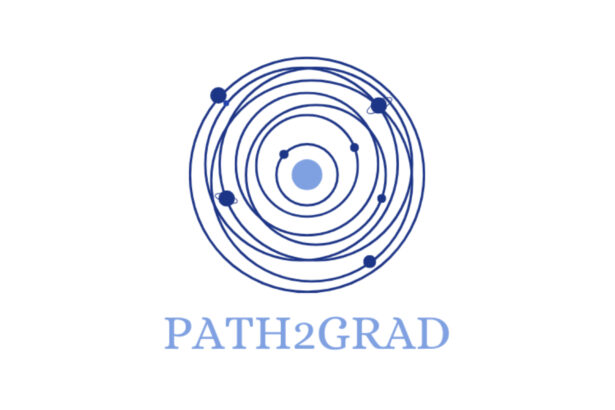The Project
How can upper elementary school students in Singapore learn essential digital competencies in an engaging and memorable way?
Must learning about the digital world always involve digital means?
These were the two initial questions that led to my conceptualisation of DigiNav101, a board game that aims to teach children aged 10 to 12 about digital safety, responsibility and information management in the Singaporean context. Through the inclusion of real-world digital scenarios, the project aims to make digital literacy accessible and enjoyable for them, thereby facilitating their long-term retention of these critical competencies. Diverging from other digital literacy education projects that take the form of interactive apps and online gamified learning platforms, this project draws on constructivism, in particular the idea that students learn effectively when they actively engage in hands-on experiences and construct their understanding through such experiences and social interaction.
DigiNav101 aims to strike a balance between real-world relevance and playfulness, with game features built in to scaffold learning in a way that builds student confidence, encourages experimentation, and allows them to learn through trial and error. The use of scenarios that gradually increase in complexity as the game progresses helps students to engage in exploratory conversations and advance their decision-making abilities, at the same time reflecting the multi-layered challenges they face in the real digital world. “Co-opetition” – the idea of cooperating with competitors – is the way to win the game. This serves to illustrate to students how their decision making in the digital world really don’t just impact themselves; others in the game benefit from their thoughtful considerations too. Help provided by one player to another is an important element of the game as well, imparting to students the notion that in the digital world, just like in the real world, “we rise by lifting others“.
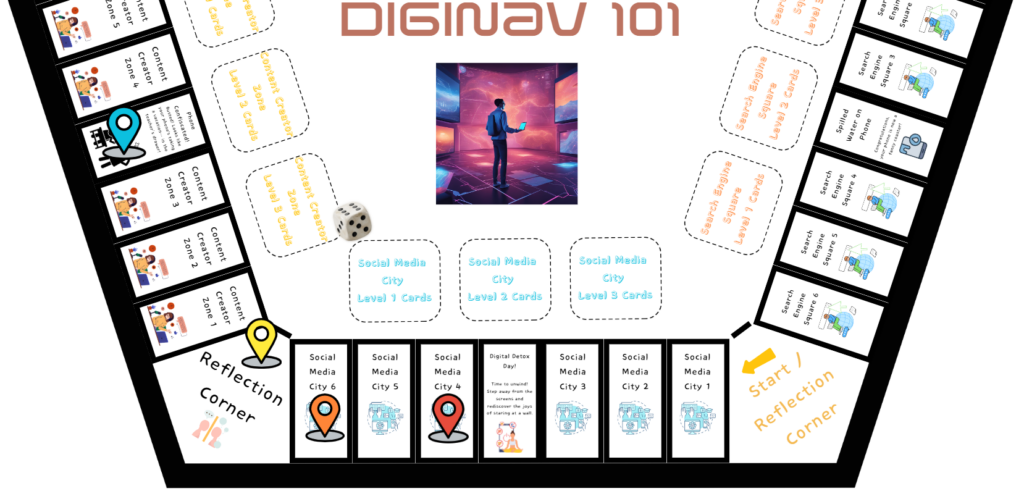
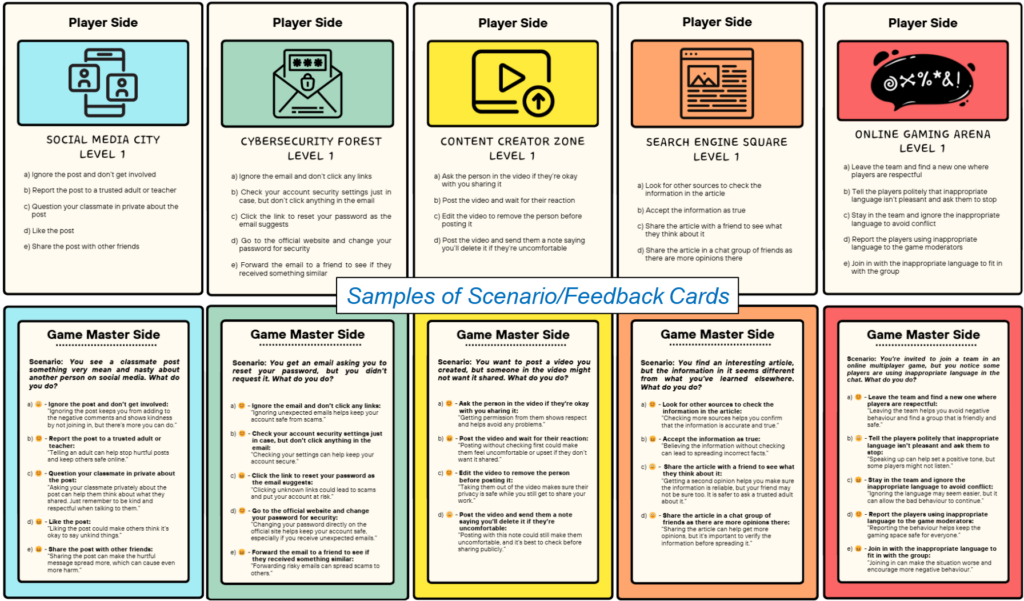
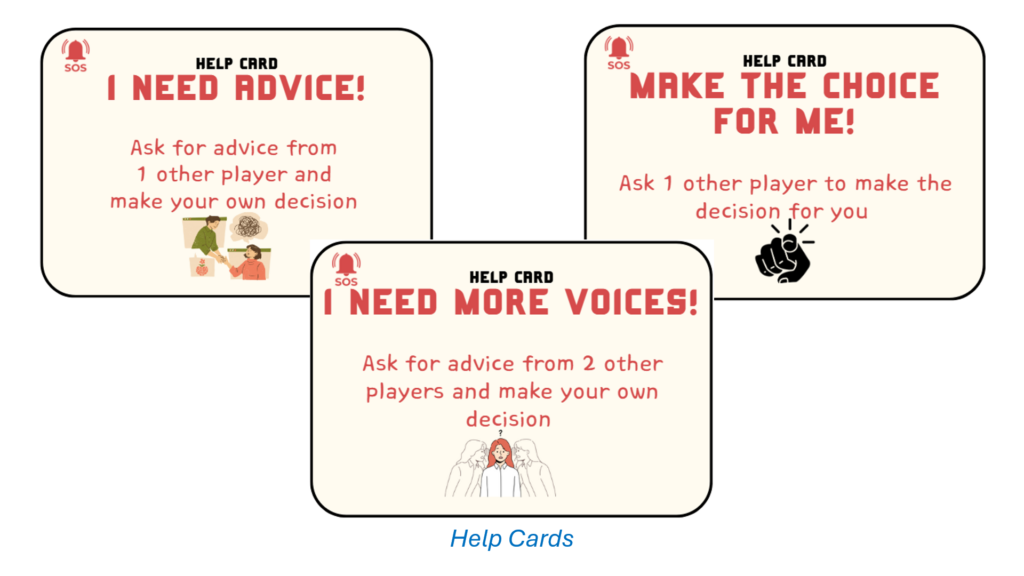
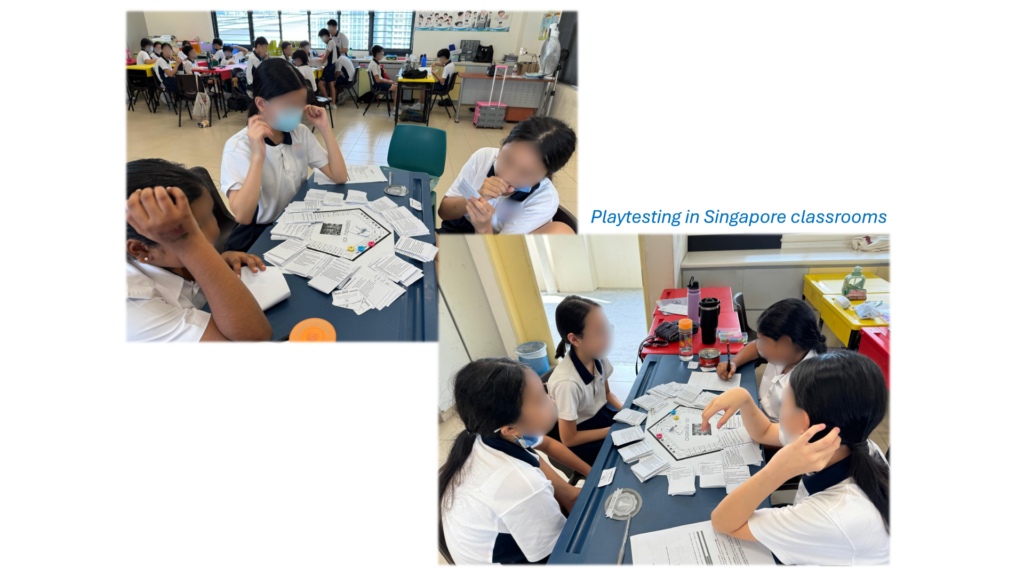
—————————————————
The Design Journey
My interest in digital literacy and my desire to support Singaporean children in this area stem from my background as an elementary school teacher in Singapore for ten years, and later on, an EdTech Officer with the Ministry of Education, Singapore. Over the years, I witnessed how young students interact with digital spaces, often without the necessary competencies to navigate them safely and responsibly. The rapid integration of technology in schools and everyday life makes digital literacy essential, yet the resources to equip children with these competencies in an engaging way remain limited and are largely confined to tech-enabled solutions that focus mainly on learning in individual settings. DigiNav101 was thus inspired by the need to address this gap through a playful, interactive medium that encourages collaborative learning and problem-solving.
DigiNav101’s design process has been dynamic as I sought to balance educational value with engagement. From the early stages, my approach was guided by principles from design thinking and constructivism – I aimed to create hands-on learning experiences that allowed students to construct their understanding through simulated real-world scenarios. Drawing from Don Norman’s insights on user-centered design, I focused on developing an intuitive, enjoyable game format that would maintain students’ interest while effectively teaching digital literacy concepts. As I moved forward, I recognised the importance of an iterative design process. Reading about the ideas of Richard Buchanan and Eleanor Duckworth also pushed me to think about framing the challenges in my game as open-ended scenarios with no single correct answers and about empowering students to explore, experiment, make mistakes, test their ideas and see the consequences of their choices – in other words, to have the game reflect the real-world messiness of digital scenarios.
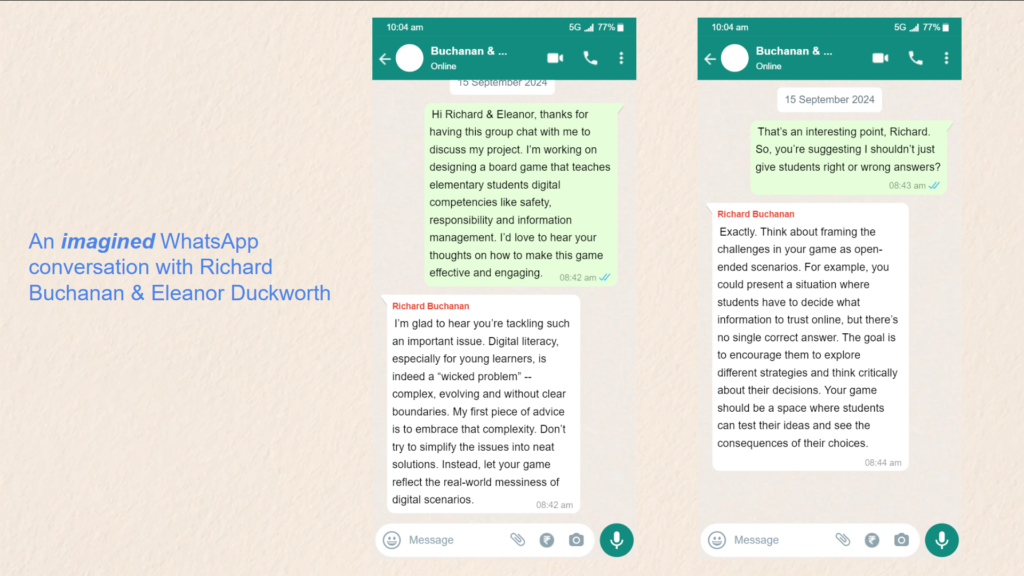
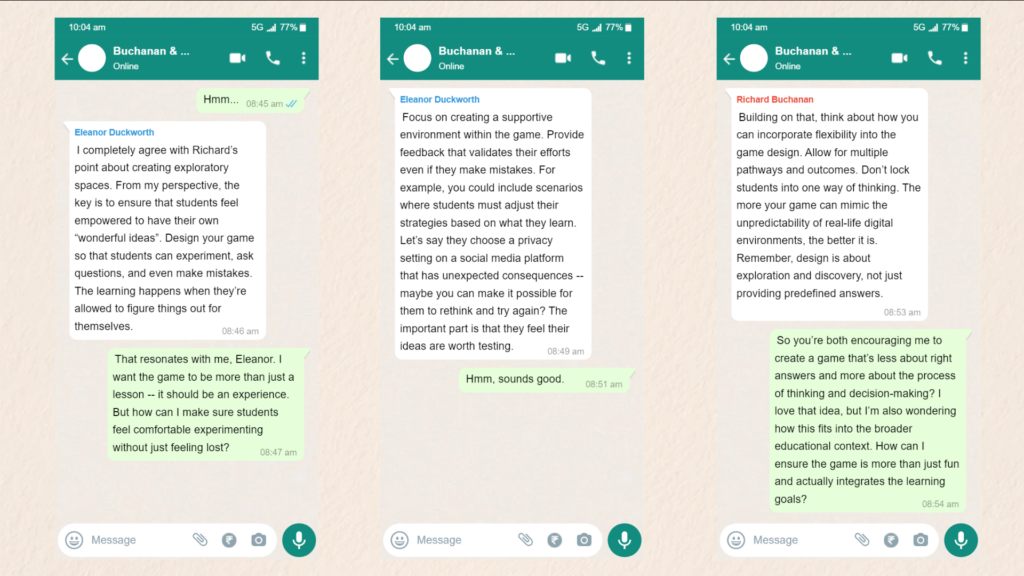
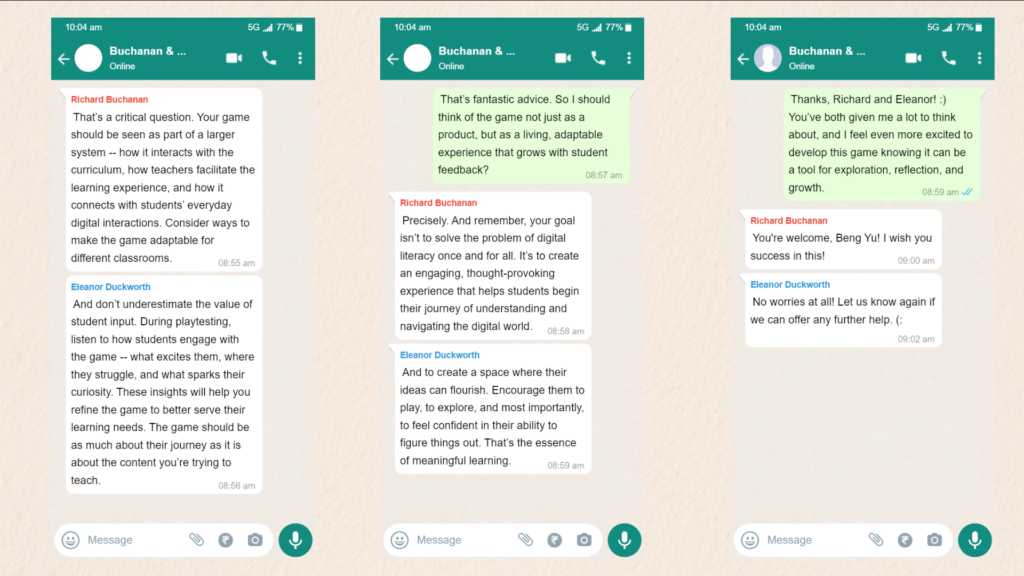
Receiving feedback from my TF, Shinyi, and engaging in conversations with my LDIT PCE peers (and my wife, Grace!) helped refine my perspective too. Their thought-provoking questions challenged me to consider game mechanics more critically and think about how each element contributed to the overall learning goals as I continued to wrestle with “tinkerability” – an idea that Mitchel Resnick and Eric Rosenbaum champion.
Recognising the design process not as a linear path but as an ongoing cycle of testing, feedback and improvement, as well as the value of participatory design, I collaborated with two former colleagues who teach elementary school in Singapore for the playtesting of DigiNav101. This stage of having teachers test the game with small groups of students and sharing with me their observations, their feedback, and their students’ feedback has been invaluable. By involving educators who understand classroom dynamics and the learning needs of Singaporean students, I gained further insights that would help me refine the game’s structure, content and difficulty progression. Centring the needs and perspectives of the end-users – in other words, the students – would help ensure that the game remains relevant, accessible and impactful for diverse learners too. While engagement is essential, the primary objective should always be to support meaningful learning. To this end, I will continue to refine the game mechanics to encourage critical thinking and responsible decision-making, focusing on making each gameplay choice a learning opportunity rather than a simple “right or wrong” answer.
As I continue refining DigiNav101, I’m motivated by the potential to make digital literacy an engaging, empowering topic for young learners. The journey has been one of continuous learning. I look forward to seeing how students respond to the final version and how it may support their navigation of the digital world.
Credit for all images used in prototype: Canva


